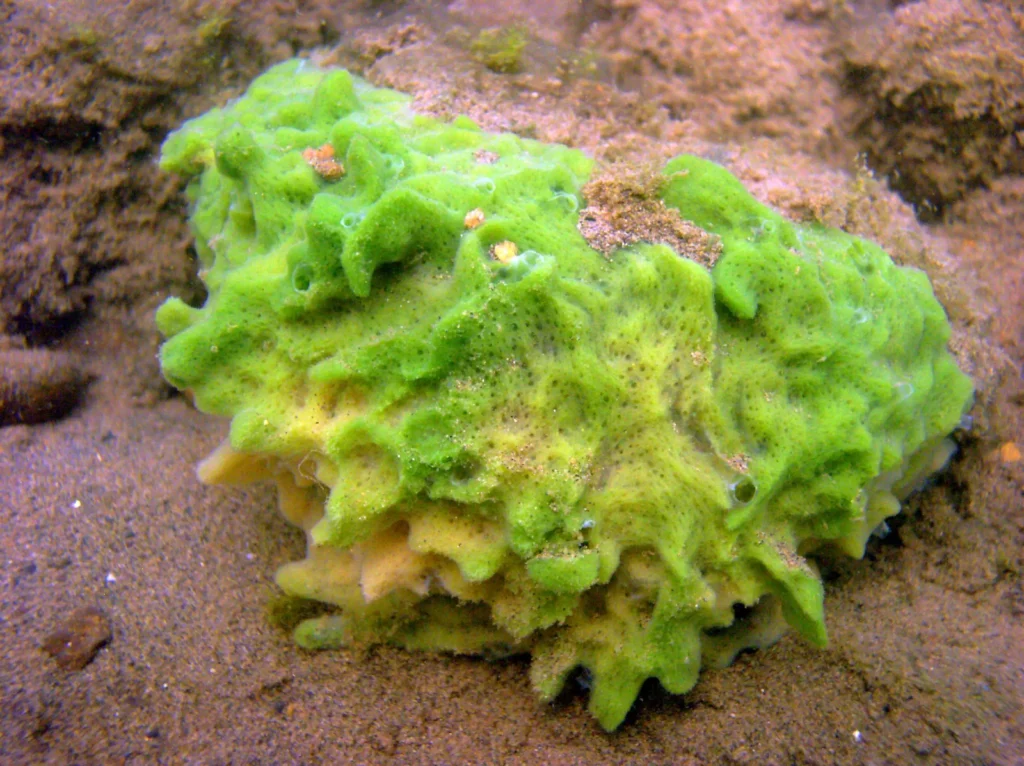
Badiaga
Latin name: Badiaga
Short name: Bad
Common name: Freshwater Sponge | Spongilla | Spongia fluviatilis | River Sponge
Primary miasm: Sycotic Secondary miasm(s): Syphilitic
Kingdom: Animals
Family: Porifera
- Symptomatology
- Remedy Information
- Differentiation & Application
Badiaga is prepared from a freshwater sponge that inhabits rivers and lakes, particularly in Russia and North America. The plant-animal organism is composed of a fibrous network embedded with siliceous spicules. In homeopathy, the dried sponge is triturated and potentised. It exerts its primary action on the skin, lymphatic system, connective tissues, and the periosteum. It is notable for its marked capacity to absorb ecchymoses and reduce glandular swellings [Clarke].
Traditionally used in Russia as a folk remedy for bruises, rheumatism, and skin blemishes. In crude form, it was rubbed into the skin to stimulate circulation and resolve swellings.
Proved and introduced into homeopathic literature by the Russian school; later confirmed by American provers and clinical use in the late 19th century.
- Skin and Cellular Tissue: Resolving indurations, ecchymoses, swellings after trauma [Hering].
- Lymphatic Glands: Chronic glandular enlargements, especially after inflammation [Clarke].
- Periosteum and Bones: Rheumatic and syphilitic periostitis [Hering].
- Muscles: Soreness and stiffness, particularly after injury or overexertion [Boericke].
- Mucous Membranes: Chronic nasal catarrh with thick discharge [Hale].
- Rest and avoidance of cold draughts [Hering].
- Gentle rubbing of affected parts in superficial bruises [Clarke].
- Warmth applied to rheumatic joints [Boericke].
- Cold air and damp weather [Clarke].
- Touch or pressure on bruised parts [Hering].
- Sudden motion after rest in rheumatic stiffness.
- Arnica montana – Acute trauma; Badiaga is for lingering effects and chronic indurations.
- Bellis perennis – Deep tissue trauma; Badiaga more specific for glandular and periosteal swellings.
- Calcarea fluorica – Chronic indurations, but Badiaga more linked to trauma and bruising history.
- Mercurius iodatus flavus – Glandular swellings, but with marked ulceration.
- Complementary: Silicea, Calcarea phosphorica.
- Antidotes: Arnica in acute injury phase.
- Follows well: Bellis perennis after recent trauma.
Badiaga is the chronic bruise remedy — it addresses the after-effects of blows, falls, and injuries when swelling, induration, or discolouration remains. It acts on sluggish constitutions prone to glandular swellings and chronic rheumatism, especially in damp climates. Its essence is resolution — of stagnation in the tissues, lingering pain, and slow-healing injury effects.
- Use in old bruises that fail to resolve.
- Effective in post-traumatic glandular swellings, especially cervical.
- Valuable in scrofulous children with chronic nasal obstruction and glandular enlargement.
Mind:
- Irritability from chronic pain
- Ailments from injury
Head:
- Pain, bruised sensation in scalp
- Headache, damp weather
Nose:
- Coryza, chronic, thick discharge
- Tenderness of nasal bridge
Skin:
- Ecchymosis, lingering after injury
- Indurations from trauma
Extremities:
- Rheumatism, chronic, damp weather
- Soreness as if bruised
Generalities:
- Glandular swelling after injury
- Slow healing of bruises
Hering C. – Guiding Symptoms: glandular swellings, bruised sensations.
Clarke J.H. – Dictionary: chronic ecchymoses, scrofulous constitutions.
Boericke W. – Pocket Manual: trauma, rheumatic stiffness.
Allen T.F. – Encyclopedia: proving data from Russian and American sources.
Hale E.M. – New Remedies: mammary indurations post-injury.
Hughes R. – Cyclopaedia: clinical role in trauma resolution.
Farrington E.A. – Clinical Materia Medica: comparison with Arnica and Bellis.
Nash E.B. – Leaders: sluggish constitutions, scrofulous taint.
Dewey W.A. – Practical Therapeutics: chronic injury management.
Boger C.M. – Synoptic Key: glandular induration after trauma.
